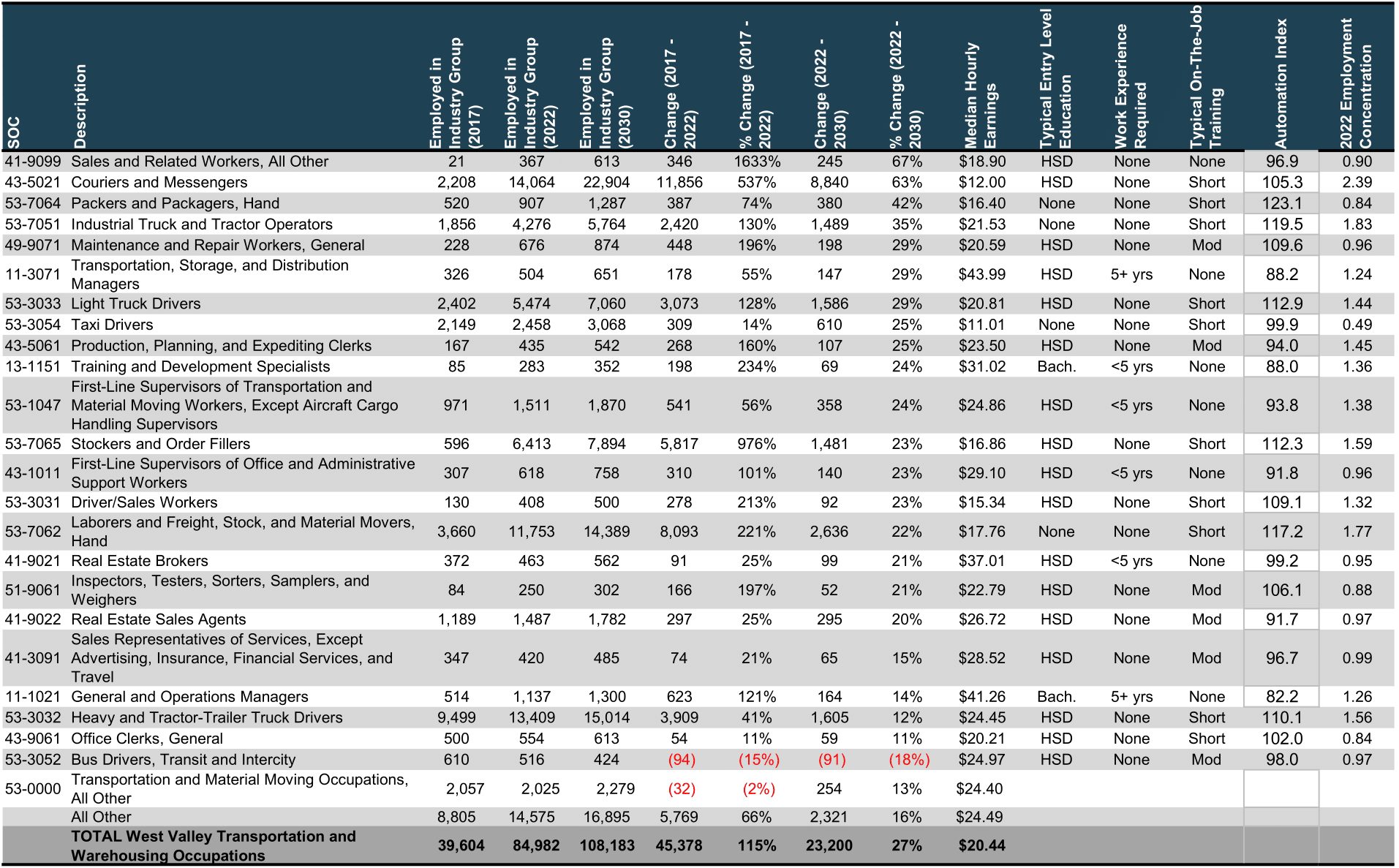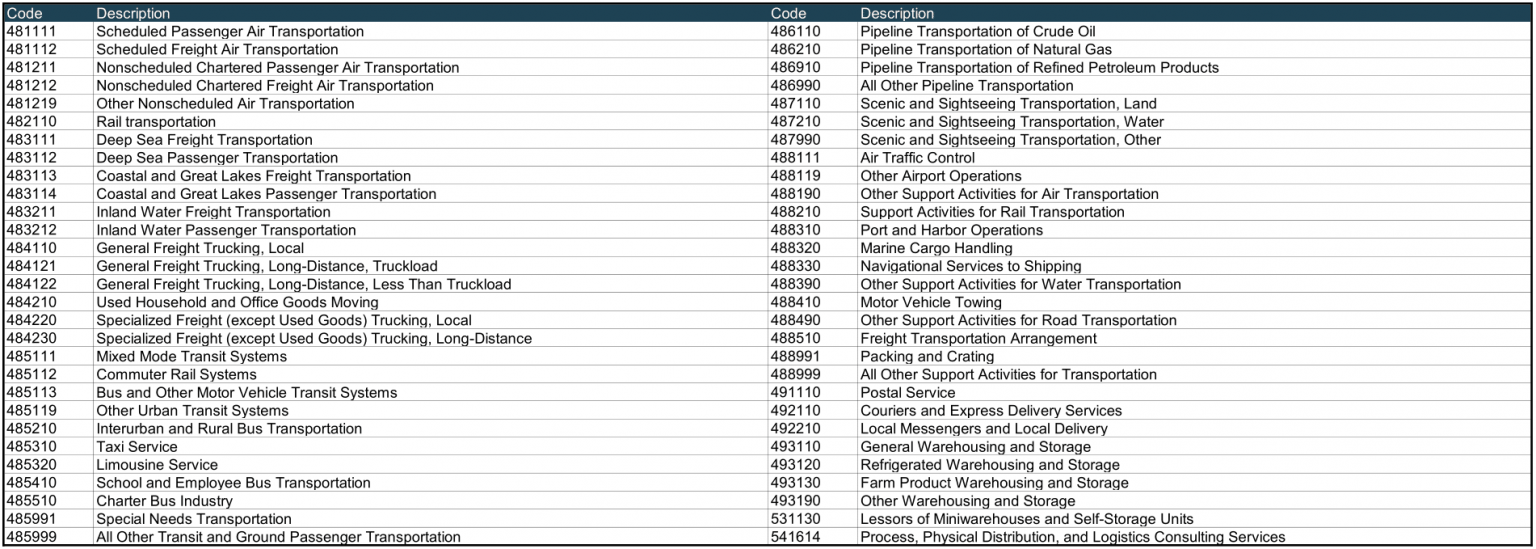Top West Valley Occupations in the Transportation and Warehousing Sector
Scroll below to see the Sector Definitions for what Industries make up the Sector.
See ZIP Codes Definitions for what ZIP Codes define the West Valley.

Lightcast Q3 2023 Data Set, pulled October 2023
Typical Entry-Level Education codes:
None = No formal educational credential
HSD = High School Diploma
Cred. = Some college, no degree OR Post-secondary credential
Assc. = Associate's Degree
Bach. = Bachelor's Degree
Mast. = Master's Degree
Doct. = Doctoral or professional Degree
Typical On-the-Job Training codes:
None
Intern = Internship / Residency
Appren. = Apprenticeship
Short = Short-term OJT
Mod = Moderate-term OJT
Long = Long-term OJT
Employment Concentration:
Employment Concentration (also known as Location Quotient) quantifies the concentration of employed workers in a region relative to the national average. It can reveal what makes a particular region “unique” in comparison to the national average. For example, if the leather products manufacturing industry accounts for .02% of jobs in your area but .01% of jobs nationally, then the area’s leather-producing industry has a concentration of .02 ÷ .01 = 2.0 in your area (as compared to the nation). So in your area, leather manufacturing accounts for a larger than average “share” of total workers — the share is twice as big as normal. Source: Lightcast's proprietary employment data.
Automatiom Index:
Lightcast's US Automation Index analyzes the potential automation risk of occupations based on job task content—derived from ONET work activities. Combining that data with the Frey and Osborne findings at the occupation level, we identify which job tasks are 'at risk' and which are resilient. We also incorporate data to identify where occupations cluster in industries facing disruption, and where workers' skills mean their nearest job options are also facing automation risk. This is a 100-based index, meaning that occupations with an automation index above 100 have an above average risk of automation, while occupations with an automation index of below 100 have a below average risk of automation. Note: automation index is unavailable for Legislators, Military, and Unclassified occupations, so they are excluded from aggregate indexes for higher-level occupations.
Resident Workers:
Individuals that live in the region and hold the occupation but may work outside of the region. Source: This data comes from the Census LODES data, specifically from Origin and Destination (OD) data, Regional Area Characteristics (RAC), and Workforce Area Characteristics (WAC) data which Lightcast applies to our occupation jobs figures.
Sector Definition: Transportation and Warehousing
The Transportation and Warehousing sector is defined by the following North America Industry Classification System industry codes:

